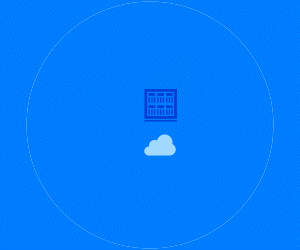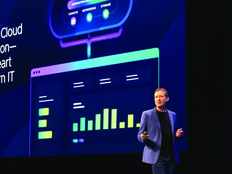National security and defense agencies need air-gapped, cloud-based collaboration tools that ensure the security of top-secret information and support their hybrid cloud strategies before fully embracing remote work.
A few companies, such as Cisco, which produces Webex, are developing specialized versions of the on-premises calling, meeting and messaging services they already provide agencies to meet their security requirements.
Air-gapped cloud deployments are isolated from public networks and operated domestically by employees with security clearances to handle sensitive data. Cisco committed in April to delivering an air-gapped, cloud-based version of Webex starting in 2024.
“Historically, national security and defense needs have been very different from other agency needs in the sense that they’re on a different level of security controls,” says Jeetu Patel, executive vice president and general manager of security and collaboration at Cisco. “What you have to do over there is use on-premises products.”
That means the Department of Defense and national security agencies can’t get all the benefits of cloud-based systems, a “false choice” of security over productivity, Patel adds.
Bespoke Hybrid Deployments of Collaboration Tools
Traditional thinking has been that Software as a Service products couldn’t be isolated because they’re connected to the internet for updates and patching as regularly as a customer wants. But Cisco is fine-tuning the software engineering practice of continuous integration and continuous delivery into what it’s calling CI/CD/CD.
That second deployment — in this case, Webex — is into environments with boundaries that will enforce the DOD’s or national security agencies’ controls, says Dan Carney, vice president of engineering and head of the Webex air-gap project at Cisco.
The result is a bespoke hybrid deployment of the standard Webex product that enables remote work, even when top-secret information is involved.
“We are hearing from our customers that that’s a super exciting prospect for them,” Carney says.
Click the banner below to learn about the benefits of hybrid cloud environments.
Enabling Next-Generation Workplace Technologies
At its 25,000-square-foot Workplace Innovation Lab at headquarters, the General Services Administration is already showcasing the latest collaboration technologies that will soon be available to the DOD and national security agencies once air-gapped environments are established.
Conceived with Cisco in 2022 and the lab took four months to construct and sees about 300 to 400 federal IT practitioners touring weekly, says Scott Morin, federal account manager at Cisco.
Artificial intelligence will be a “prominent” part of the lab, which already incorporated machine learning technologies trained without the use of customer data, Patel says. New on-premises noise removal and noise cancellation technologies can filter out background noise from vacuums or lawn mowers to isolate human speech.
EXPLORE: Why the U.S. military is embracing telecritical care technology for veterans.
AI can detect humans in a room and create individual video streams for them so employees joining remotely feel more included, and can routinely change camera angles to make meetings more engaging.
Conference rooms now track temperature, volatile compounds, humidity and number of people to improve the health and wellness of those spaces.
All of this is part of a larger effort to make the workplace a “magnet” that employees want to return to, now that agencies are requiring that, Patel says.
Cisco recognizes it’s not the only player in the collaboration tool space that’s going air-gapped, so it’s emphasizing interoperability with Zoom, Microsoft Teams and Google Meet by moving some of that software to its hardware stack.
“Microsoft Teams gets better when you actually use it on Cisco devices because you can have noise removal and noise cancellation,” Patel says.












